Okay, so I’m giving them a try…
I’ve been wanting to tackle cake plates for a long time now. But I’ve always heard horror stories of how they tend to slump & sag in the final glaze firing. So I’ve been putting it off for years. And I finally decided I needed to give ’em a try and go for it. Of course I can’t just test one. That’s just not my nature. So I went ahead and made five already! If one slumps, they’re probably ALL going to slump. But I did my best. I compressed & compressed. I tried to do as much as I could to avoid the slumping. My fingers are crossed.
Each of the cake plates are “destined” for the soda kiln. Some of them are made out of soda clay, and couple made out of B-Clay. The top surface of each of them is slip decorated with a colorful flashing slip. I hope that they really “pop” once the soda atmosphere hits them. I dried them a little slower than I normally would, but now they’re finally ready to be bisque fired.
Cake Plate #1
Cake Plate #2
Cake Plate #3
Cake Plate #4
Cake Plate #5
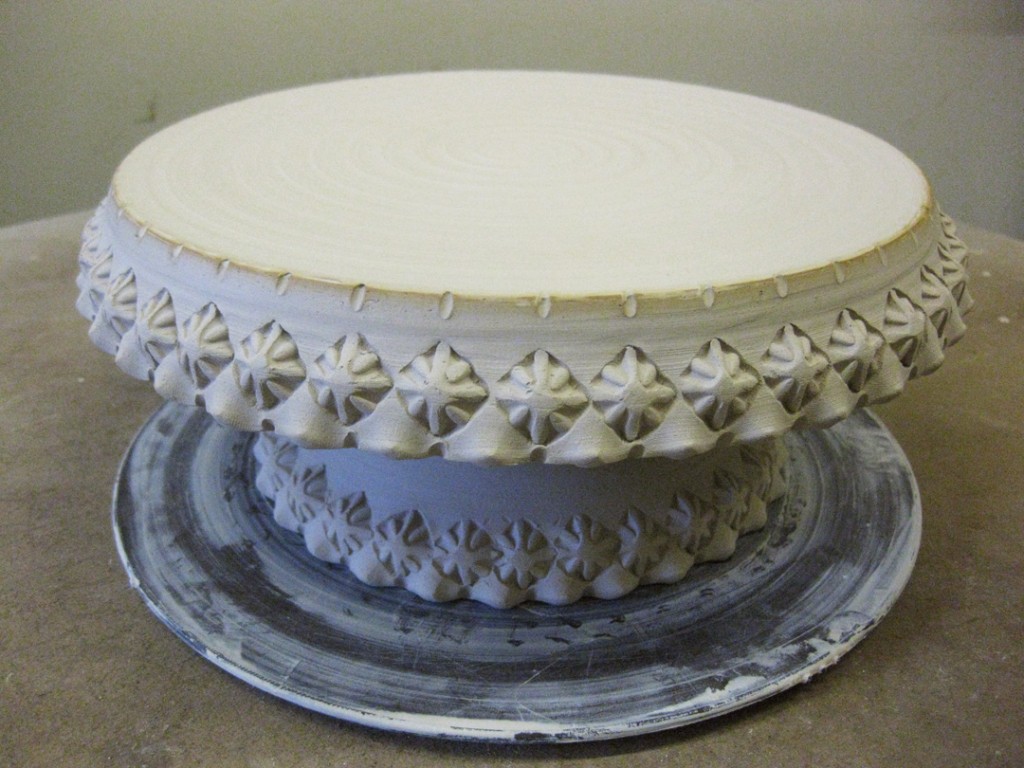
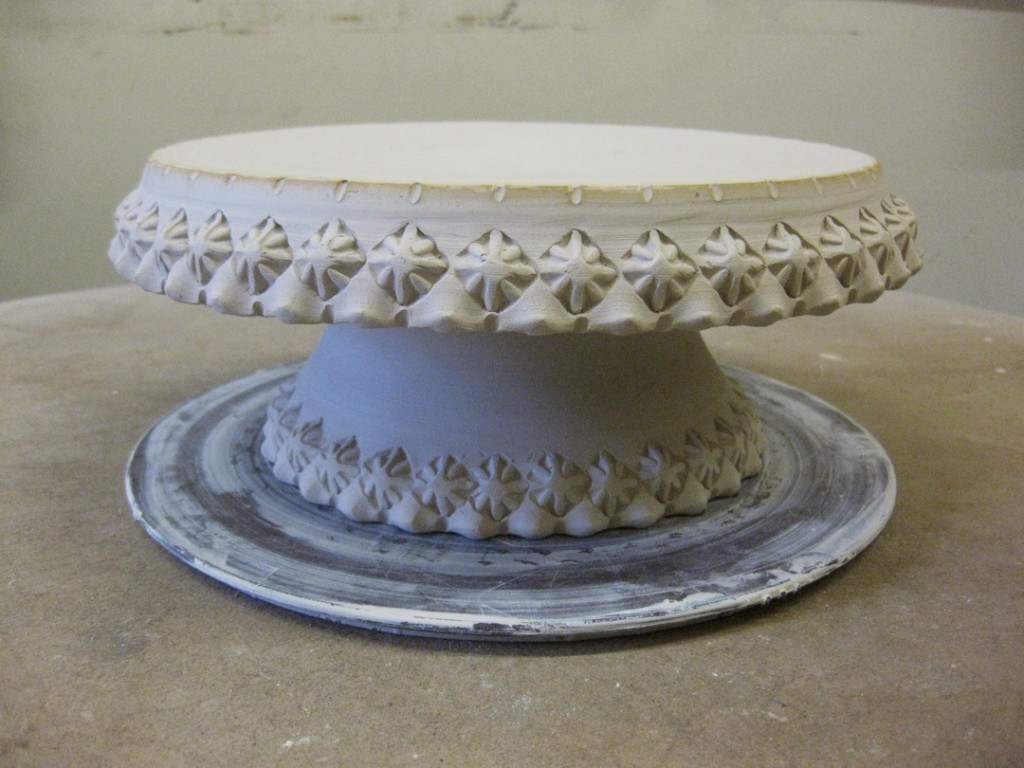
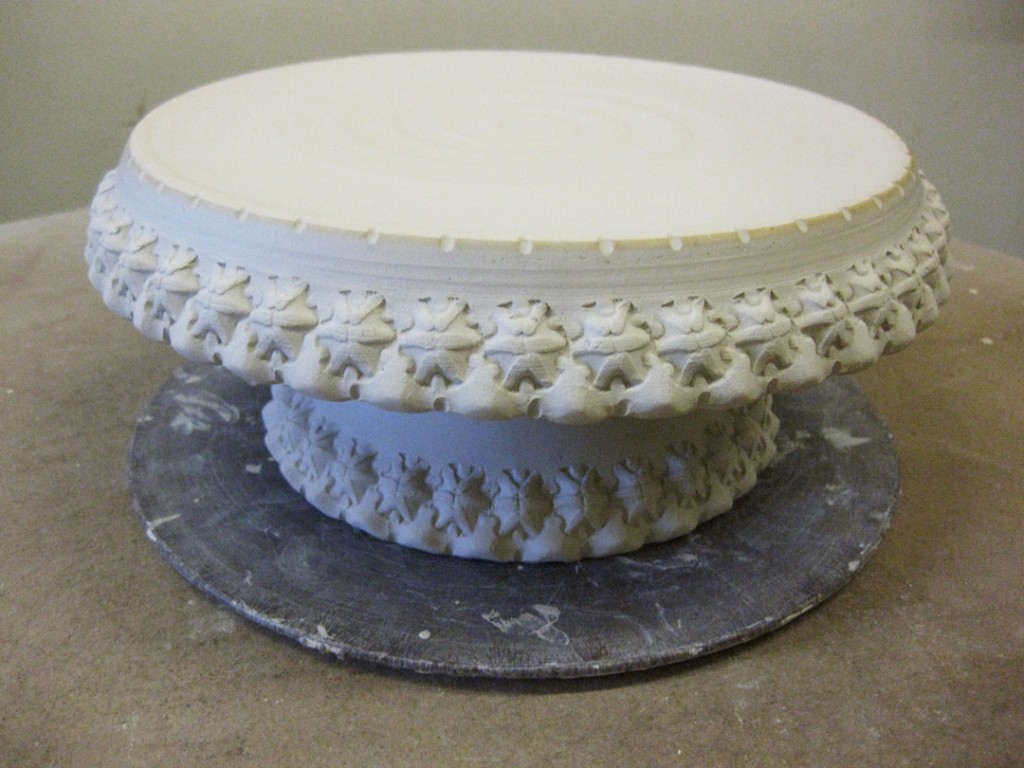
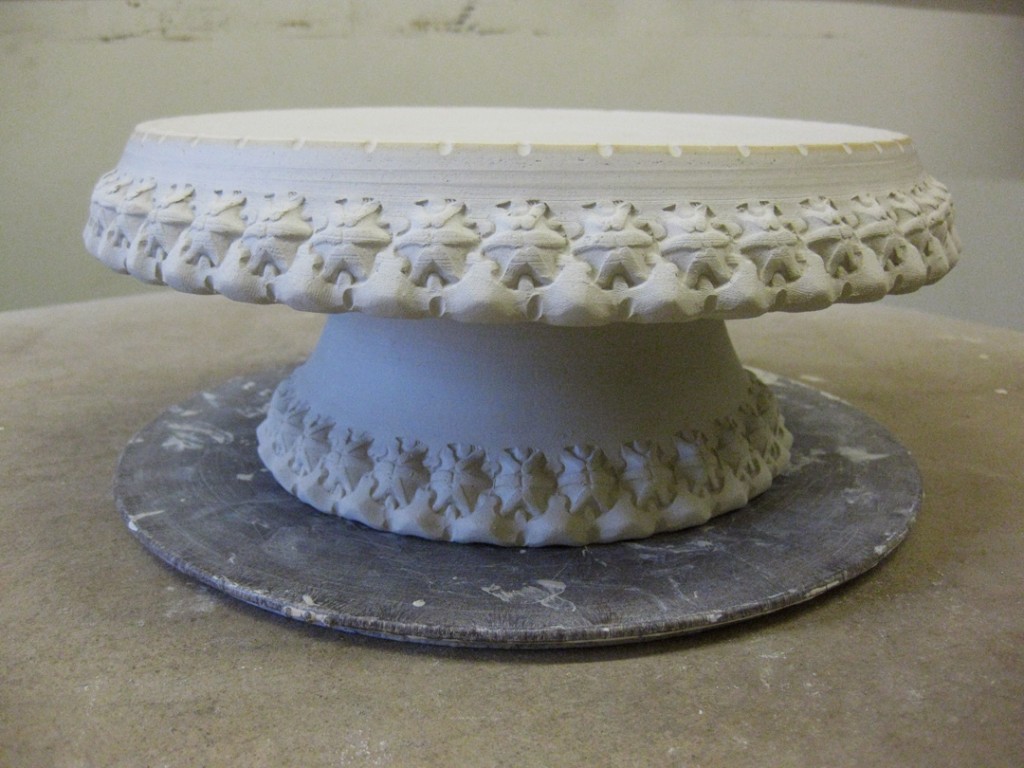
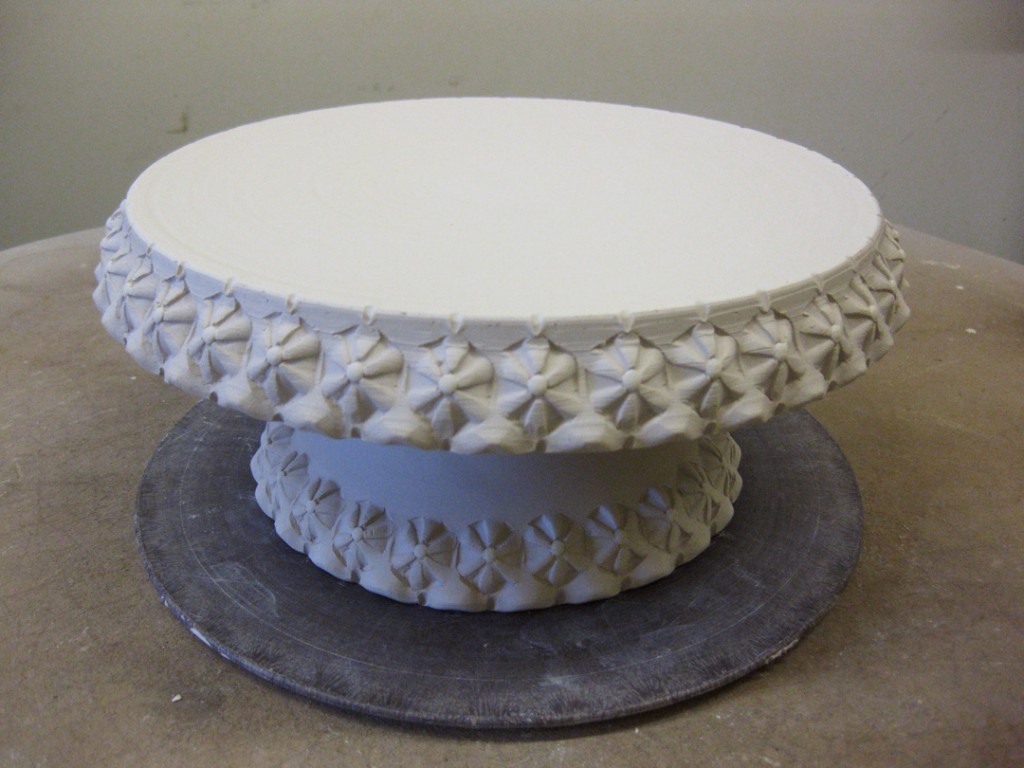
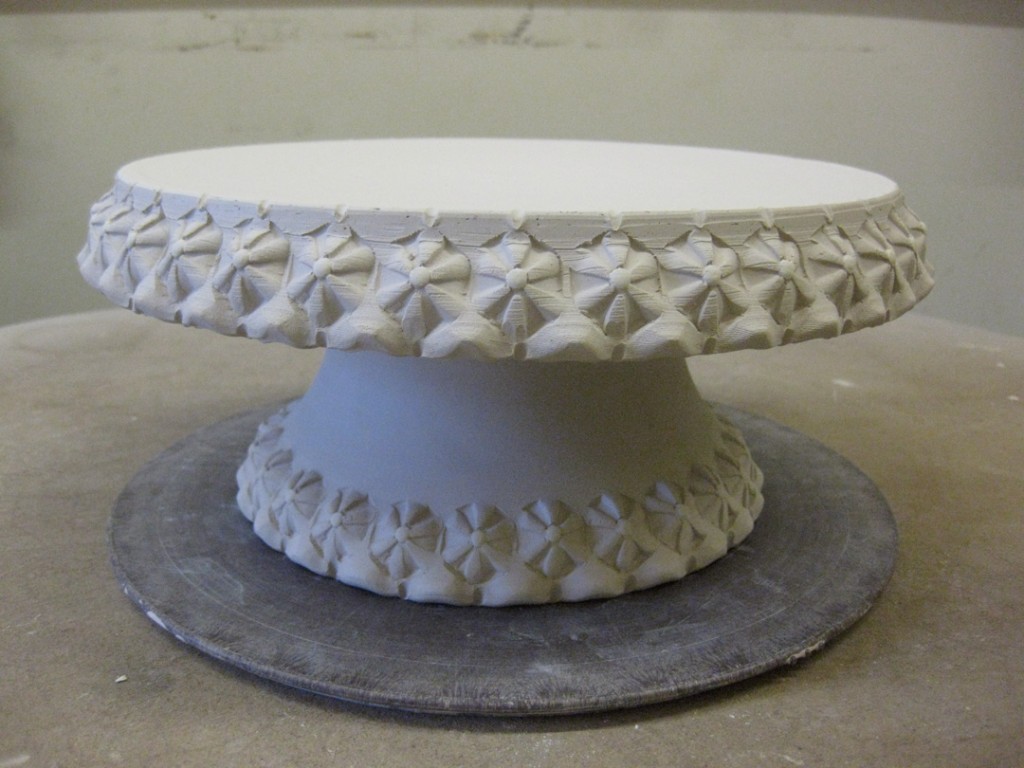
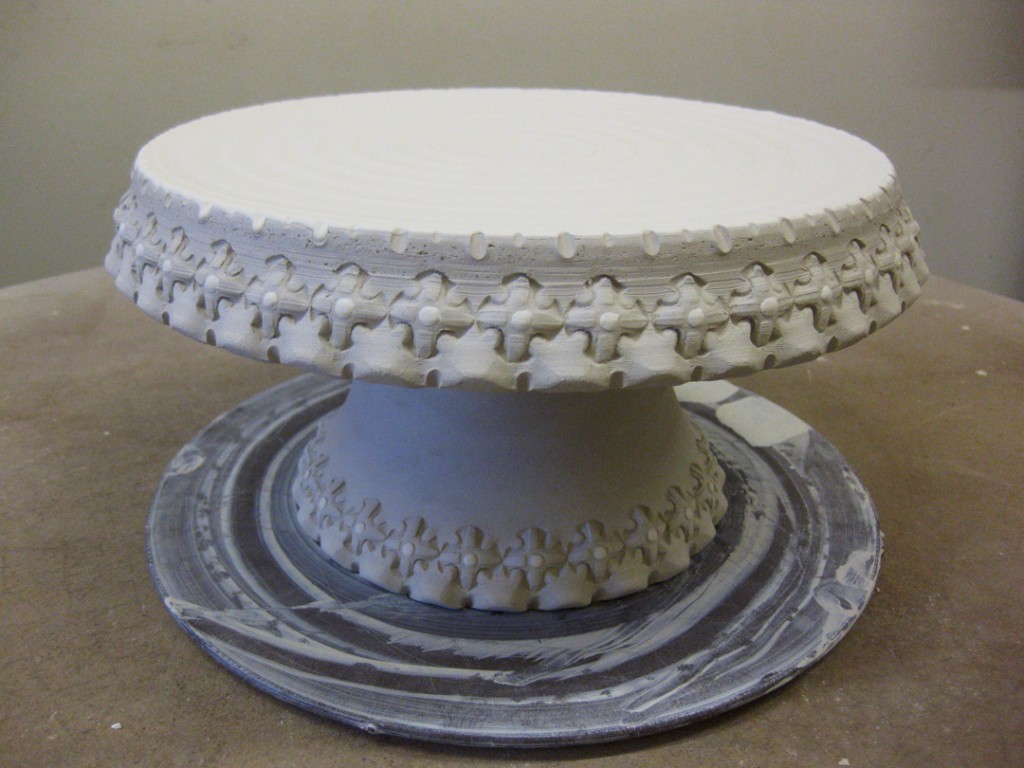
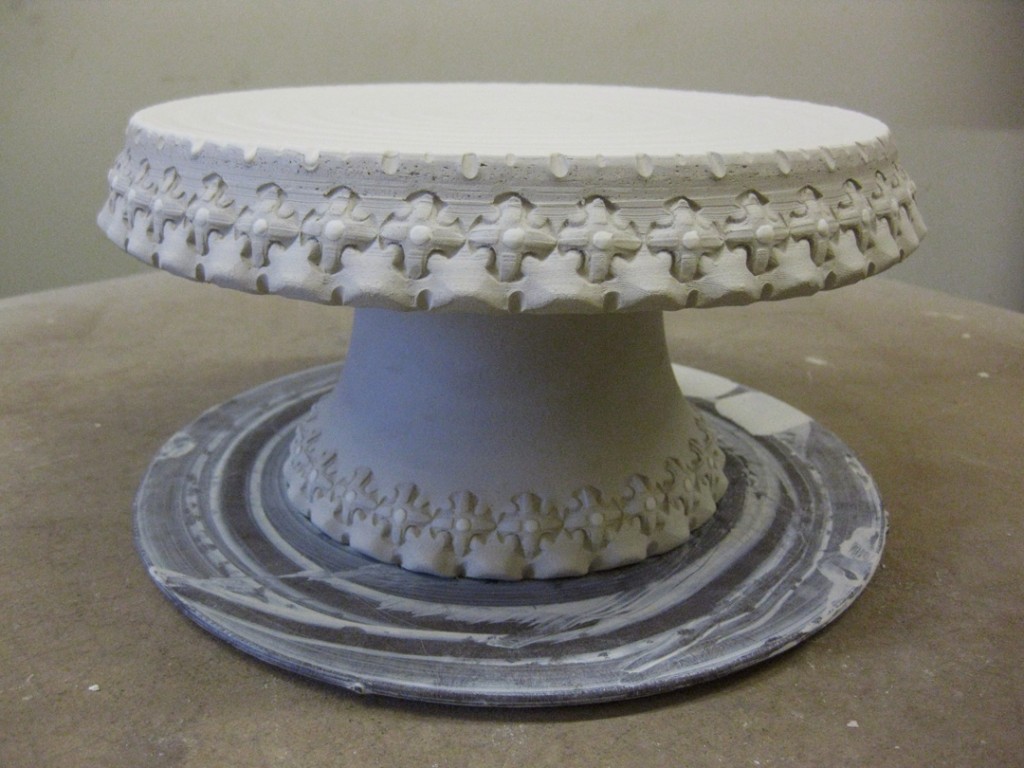
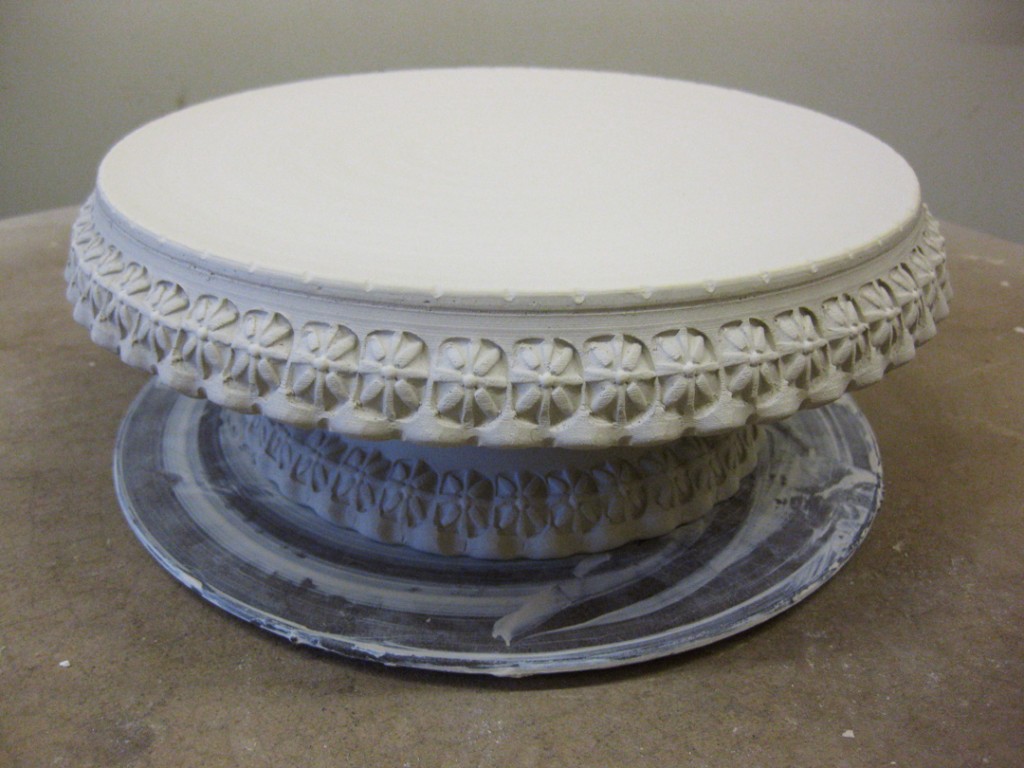
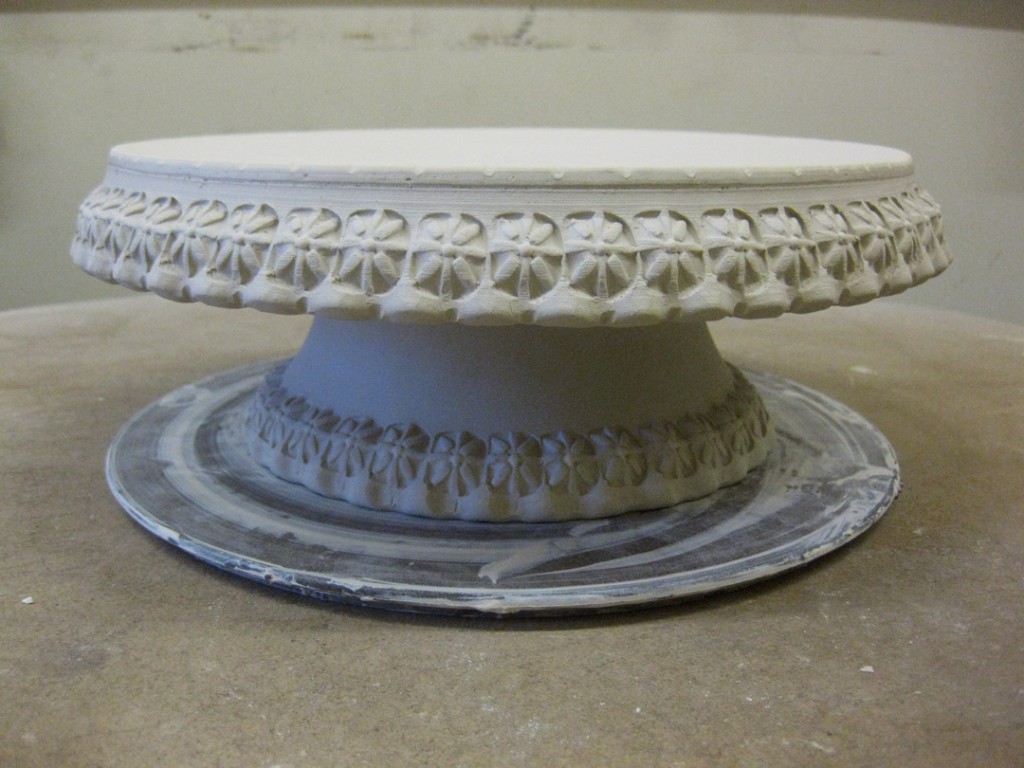
There is a trick, Gary. At least one that I have had some success with off and on (more on than off, so to me it qualifies as a trick). If the top of the pedestal has a flat surface of support for the top of the plate portion the slumping can be minimal. In other words, if the plate portion has more surface to rest on, rather than just an edge at the top of the pedestal but a wide 2″ rim, the slumping is not nearly as great, if at all. The other option, which may not work for you is to use low fire clay, that works most of the time for me also.
PS – these are beautiful, love your work!